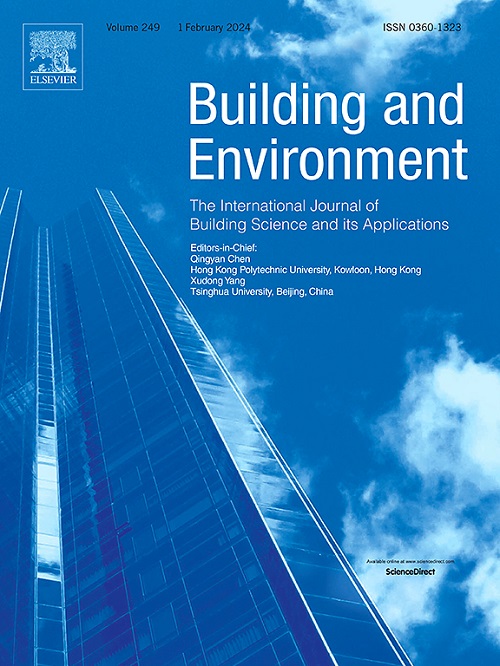基于手腕皮肤温度的混合个性化热舒适模型
IF 7.1
1区 工程技术
Q1 CONSTRUCTION & BUILDING TECHNOLOGY
引用次数: 0
摘要
室内热舒适对提高居住和工作环境的生活质量起着至关重要的作用。然而,现有的热舒适模型往往依赖于复杂的测量或需要大量的个人热投票,这限制了它们的实际应用。为了解决这些问题,本研究开发了一种混合热舒适模型,旨在减少测量负担和个人反应,同时提高个性化热舒适预测的准确性。该混合模型将数学模型与机器学习技术相结合,综合了数学模型的泛化能力和机器学习的自学习能力。实验数据是在一个办公大楼的气候控制室内进行的,共有12名受试者。通过仅监测手腕皮肤温度、室内空气温度及其时间变化,该模型显著简化了测量。在缺乏训练数据的情况下,该数学模型可以独立使用,预测准确率在中位数上提高21.11%,比PMV模型提高44.45%。在每个受试者45个数据点的5倍交叉验证中,混合模型比独立机器学习模型的性能高出24.45%。该模型在各种度量和场景的有限训练数据下展示了强大的性能,突出了其在建筑环境中的实际应用潜力。本文章由计算机程序翻译,如有差异,请以英文原文为准。
Hybrid personalized thermal comfort model based on wrist skin temperature
Indoor thermal comfort plays a crucial role in enhancing the quality of life in residential and work environments. However, existing thermal comfort models often rely on complex measurements or require a large number of personal thermal votes, which limits their practical application. To address these challenges, this study develops a hybrid thermal comfort model aimed at reducing the measurement burden and personal response while improving the accuracy of personalized thermal comfort prediction. The proposed hybrid model combines a mathematical model with machine learning techniques, integrating the generalization ability of the mathematical model and the self-learning capabilities of machine learning. Data were collected from an experiment conducted in the climate controlled chamber in an office building with 12 subjects. By monitoring only wrist skin temperature, indoor air temperature, and their temporal variations, the proposed model significantly simplifies the measurement. In the absence of available training data, the mathematical model can be used independently, improving prediction accuracy by 21.11% on median and up to 44.45% over the PMV model. In a 5-fold cross-validation with 45 data points per subject, the hybrid model outperforms the standalone machine learning model by up to 24.45%. The model demonstrates robust performance with limited training data across various metrics and scenarios, highlighting its potential for practical application in building environments.
求助全文
通过发布文献求助,成功后即可免费获取论文全文。
去求助
来源期刊

Building and Environment
工程技术-工程:环境
CiteScore
12.50
自引率
23.00%
发文量
1130
审稿时长
27 days
期刊介绍:
Building and Environment, an international journal, is dedicated to publishing original research papers, comprehensive review articles, editorials, and short communications in the fields of building science, urban physics, and human interaction with the indoor and outdoor built environment. The journal emphasizes innovative technologies and knowledge verified through measurement and analysis. It covers environmental performance across various spatial scales, from cities and communities to buildings and systems, fostering collaborative, multi-disciplinary research with broader significance.
 求助内容:
求助内容: 应助结果提醒方式:
应助结果提醒方式:


